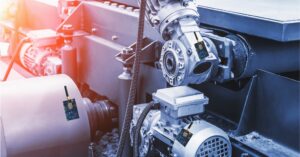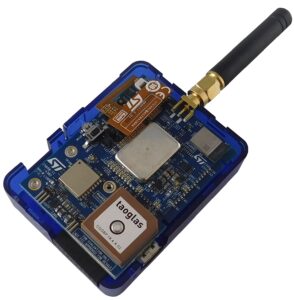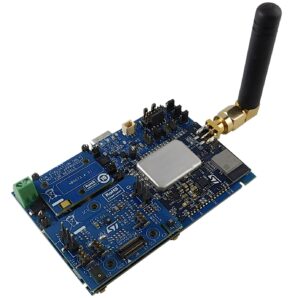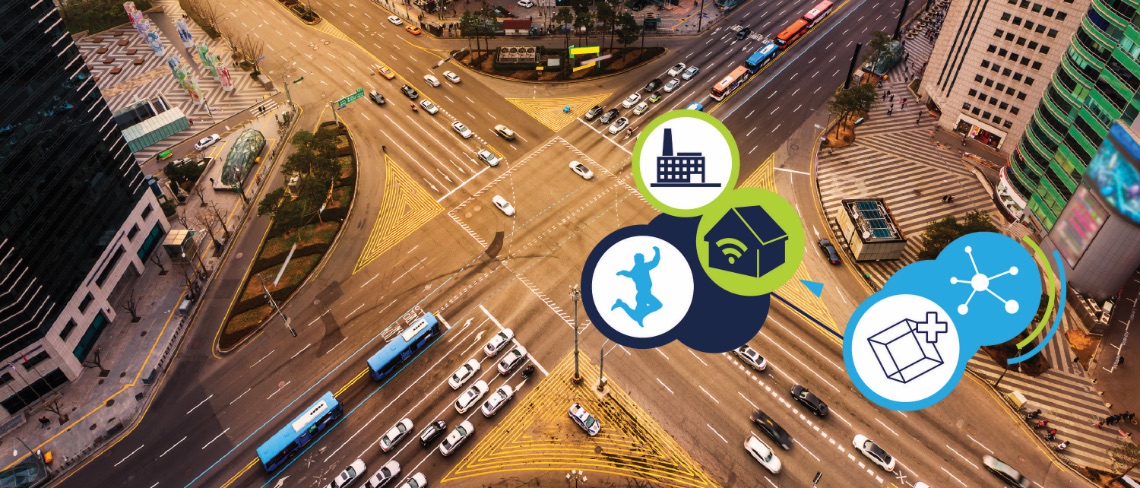As more companies look at LoRa to connect their IoT systems, ST published a white paper on LoRa connectivity for condition-based and predictive maintenance in smart industries. Choosing the right sub-GHz network is far from easy. There are many alternatives, from NB-IoT to Sigfox, to only name two of the most popular, and ST provides solutions for them, such as the Discovery Kit B-L462E-CELL1 and ST4SIM or hardware and software tools supporting Sigfox. Moreover, since choosing a network will often impact operations long-term, the plethora of choices can leave some teams struggling. Let us, therefore, explore what to consider when selecting a sub-GHz network and how the white paper can help.
Applicative considerations
What to look for in condition monitoring and predictive maintenance?

Condition monitoring and predictive maintenance applications are increasingly popular because they provide new solutions and open industries to new efficiencies. Both track the wear and integrity of equipment or infrastructure, with predictive maintenance using machine learning to anticipate failures. And as we saw during the live stream at electronica 2022 that focused on industrial applications, they both are increasingly popular because they can transform the operations of a smart factory or city. However, to be effective, both condition monitoring and predictive maintenance must have a robust network that can carry the myriad of sensor data captured by node devices. Consequently, choosing the right sub-GHz is vital.
As teams ponder what technology to choose, they must remember the specificities often associated with condition monitoring and predictive maintenance. Indeed, many applications reside in remote locations where traditional infrastructures are absent. Oil rigs, mining sites, and large agricultural domains are just a few examples. In these cases, there are no cellular networks. Teams must thus figure out how to create a network that can thrive in these remote areas. The answer often demands a cost-effective and scalable solution. Gateways that are too expensive to purchase and maintain aren’t viable solutions. Similarly, teams must be able to expand the network as new demands arise rapidly.
What to look for in infrastructure monitoring and asset tracking?
The same considerations that the white paper covers also apply to other applications increasingly relying on LoRa, like infrastructure monitoring and asset tracking. When tracking cracks or the material integrity of a bridge, the signal must carry to the gateway regardless of the surrounding materials or the location of the infrastructure. Similarly, choosing the wrong network when tracking assets can be expensive in terms of costs and energy. Indeed, it is critical to select something that will consume very low power because infrastructure monitoring and asset tracking often use nodes in places with no available electricity sources.
LoRa and Technical considerations
What to look for in a sub-GHz network?

The white paper aims to help teams with their decision-making process. Indeed, to determine what network is right for an application, engineers traditionally look at its fundamental characteristics like its range and robustness. How far apart must the gateways and relays be? What modulations is the network using? Are there error-correcting mechanisms to deal with packet drops or interferences? The answer to these questions is critical. In an industrial setting, parasitic signals coming from other equipment can lead to severe issues. Similarly, it is essential to understand how technology works in different regions of the world when assets travel from one continent to another.
The other technical consideration that teams often look at is scalability. How efficiently can teams ramp up to match demand? Very often, the increase in the number of equipment to monitor or the number of assets to track will require a substantial increase in the number of nodes in the network. However, not all provisioning is created equal. In some instances, adding a lot of end devices can be troublesome. Consequently, it is essential for teams to think ahead and know how easy it would be to support growth. Another issue is determining how easily expanding the network’s range is. In the case of infrastructure monitoring, adding nodes will also mean covering significantly more distances.
Why security and power consumption are part of the discussion?
There are also new technical considerations that teams must address as they choose their sub-GHz network. One of them is security. In general, condition monitoring or predictive maintenance doesn’t demand considerable security. While there are security needs, knowing the state of wear on an industrial pump is low-risk information. On the contrary, new government reporting policies and transparency regulations are transforming asset-tracking applications and infrastructure monitoring because the information is vastly more sensitive. Information about an asset can compromise someone’s privacy, and data on public infrastructure could lead to a national security crisis with groups targeting weaker installations.

Another new consideration is energy consumption. Condition monitoring and predictive maintenance often rely on battery-powered devices. Consequently, teams are always energy conscious. However, infrastructure monitoring and asset tracking come with new power consumption challenges. For instance, when using solar power to avoid replacing batteries, a device must be highly efficient to be viable. Similarly, tracking public structures is only possible if a node can last years in the field, which is only feasible if the current draw is extremely low. And often times, the RF is the component that draws the most power. As a result, choosing the right network will significantly impact the performance and viability of a solution.
Logistical considerations
While the white paper focuses on condition monitoring and predictive maintenance, we can see that the notions it covers will apply to other applications. It thus serves as a starting point in a team’s journey toward choosing the right sub-GHz network for their application. ST also provides development tools to get started rapidly and experiment with LoRa. For instance, the STEVAL-ASTRA1B is a development kit and reference design that features the STM32WB5MMG for Bluetooth and the STM32WL55JC for sub-GHz protocols. It also houses numerous sensors, making it an exciting prototyping and experimentation platform. We even provide an asset-tracking cloud application, the DSH-ASSETRACKING, to shorten the development phase.

Teams looking for something geared toward industrial settings can turn to the STDES-CBMLoRaBLE. It includes the same Bluetooth and sub-GHz devices as the STEVAL-ASTRA1B but houses sensors certified for industrial applications and provides dedicated algorithms for vibration analysis and tilt monitoring. Consequently, engineers could start working on condition or infrastructure monitoring and predictive maintenance applications. We even provide a software solution that uses AWS, the DSH-PREDMNT, to help provision the device, log data, visualize information, and perform cloud asset monitoring anytime and anywhere.
